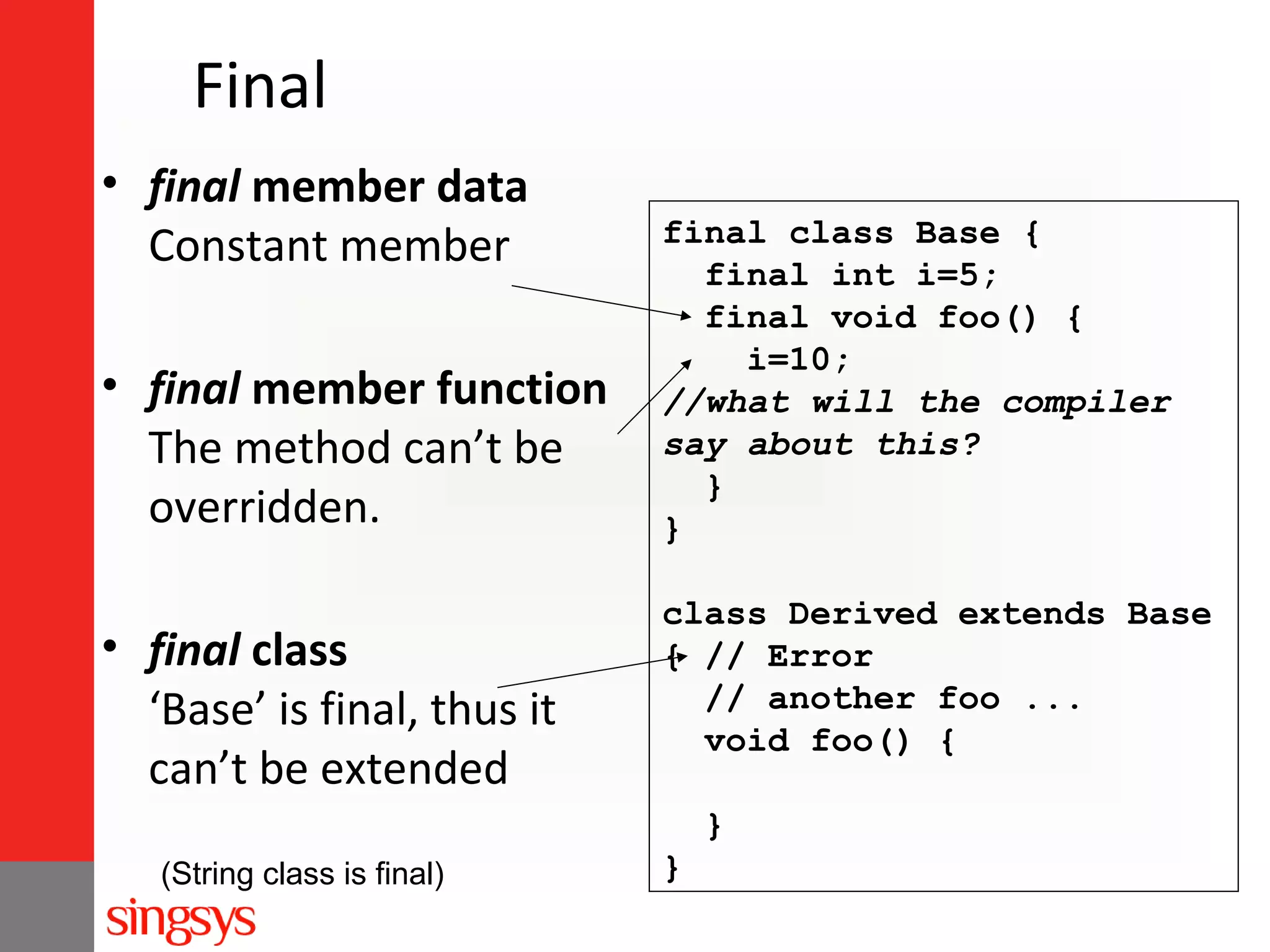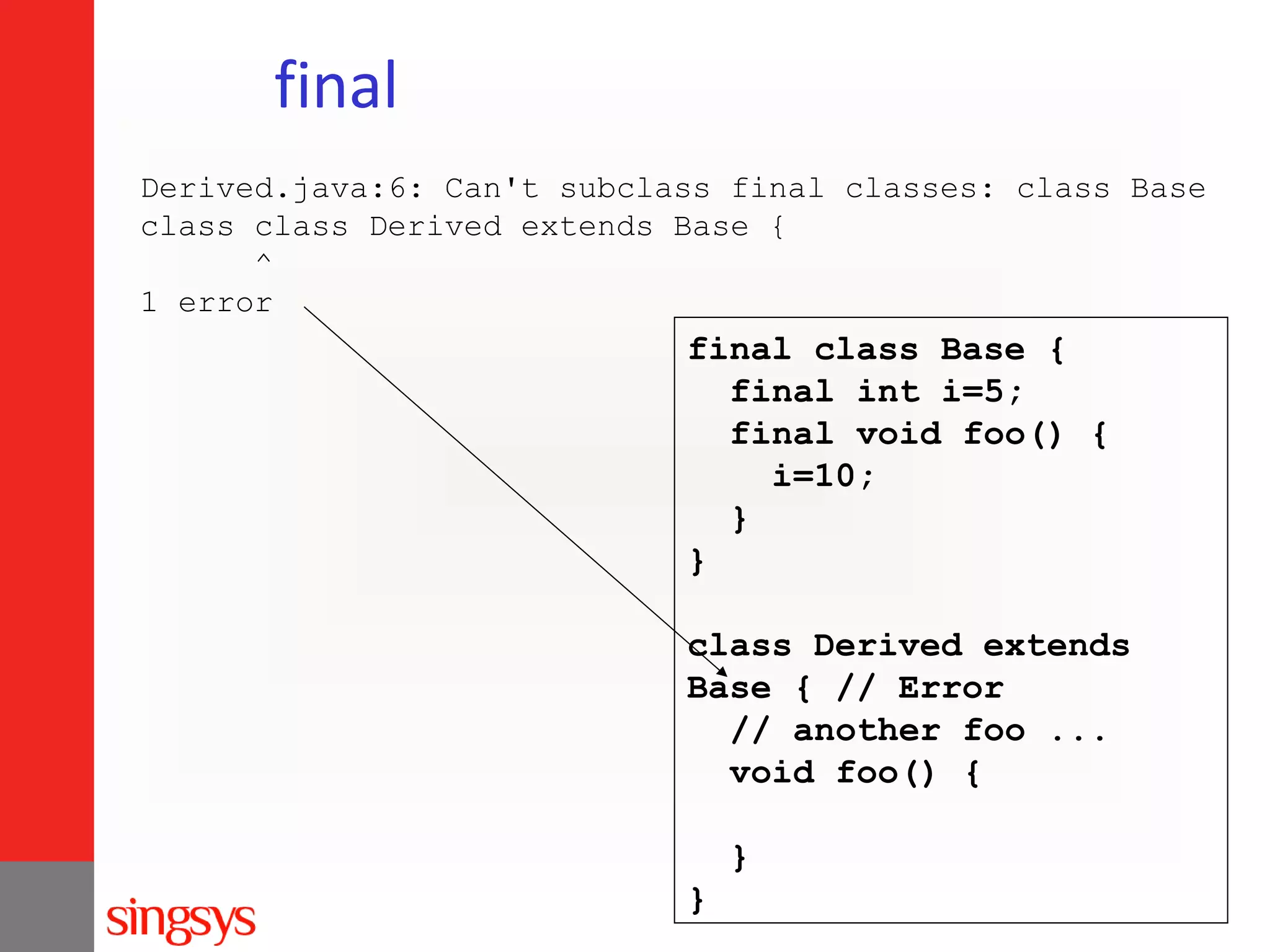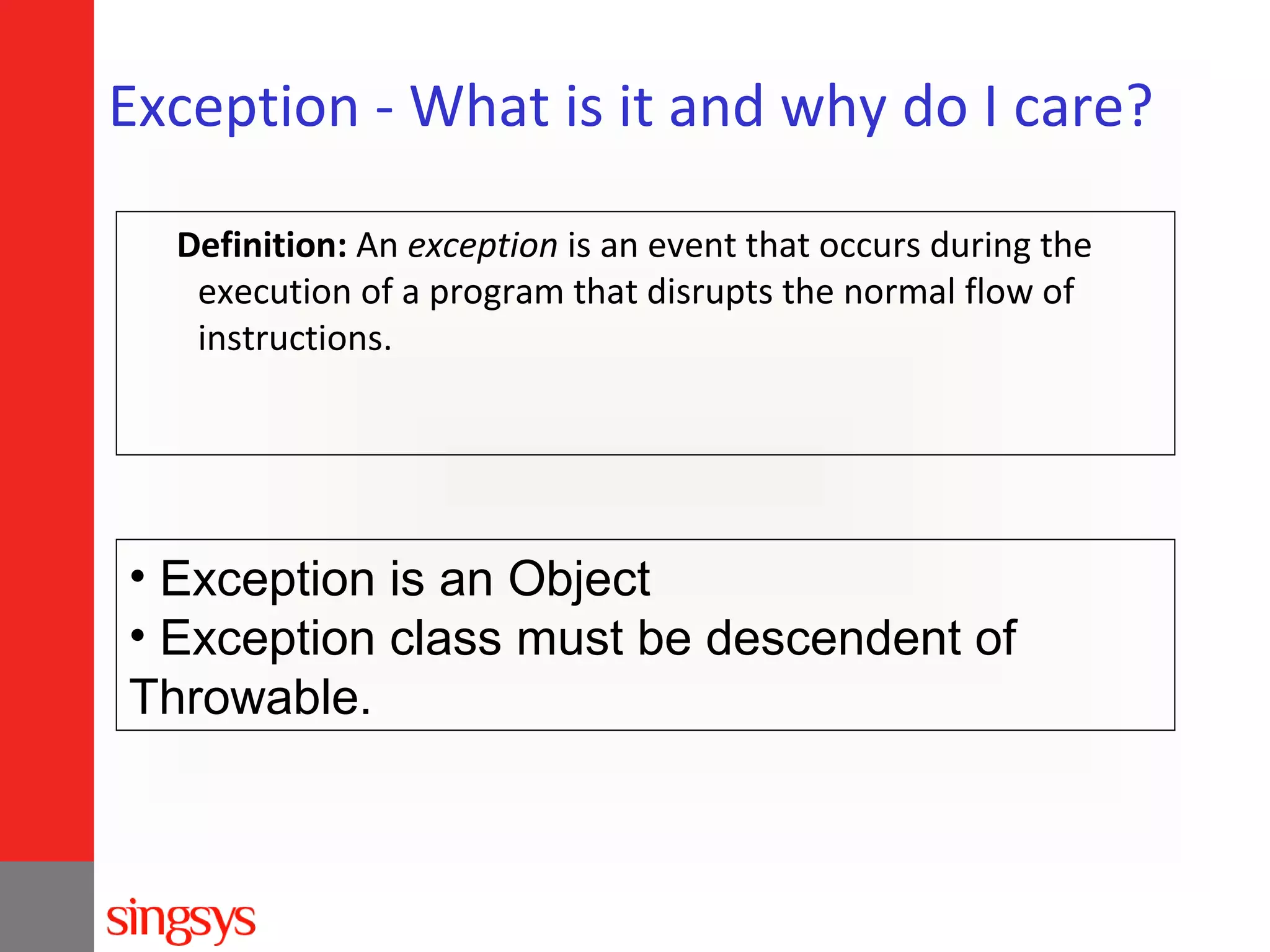This document provides an overview of object-oriented programming concepts in Java. It discusses the differences between procedural and object-oriented programming, with OOP comprising objects that communicate with each other. The main OOP concepts covered are objects, classes, inheritance, and encapsulation. Objects have an identity, attributes, and services. Inheritance allows subclasses to inherit and extend superclass attributes and behaviors. Encapsulation separates an object's internal state from its external interface. The document also discusses other Java topics like interfaces, collections framework, exceptions, and final keywords.
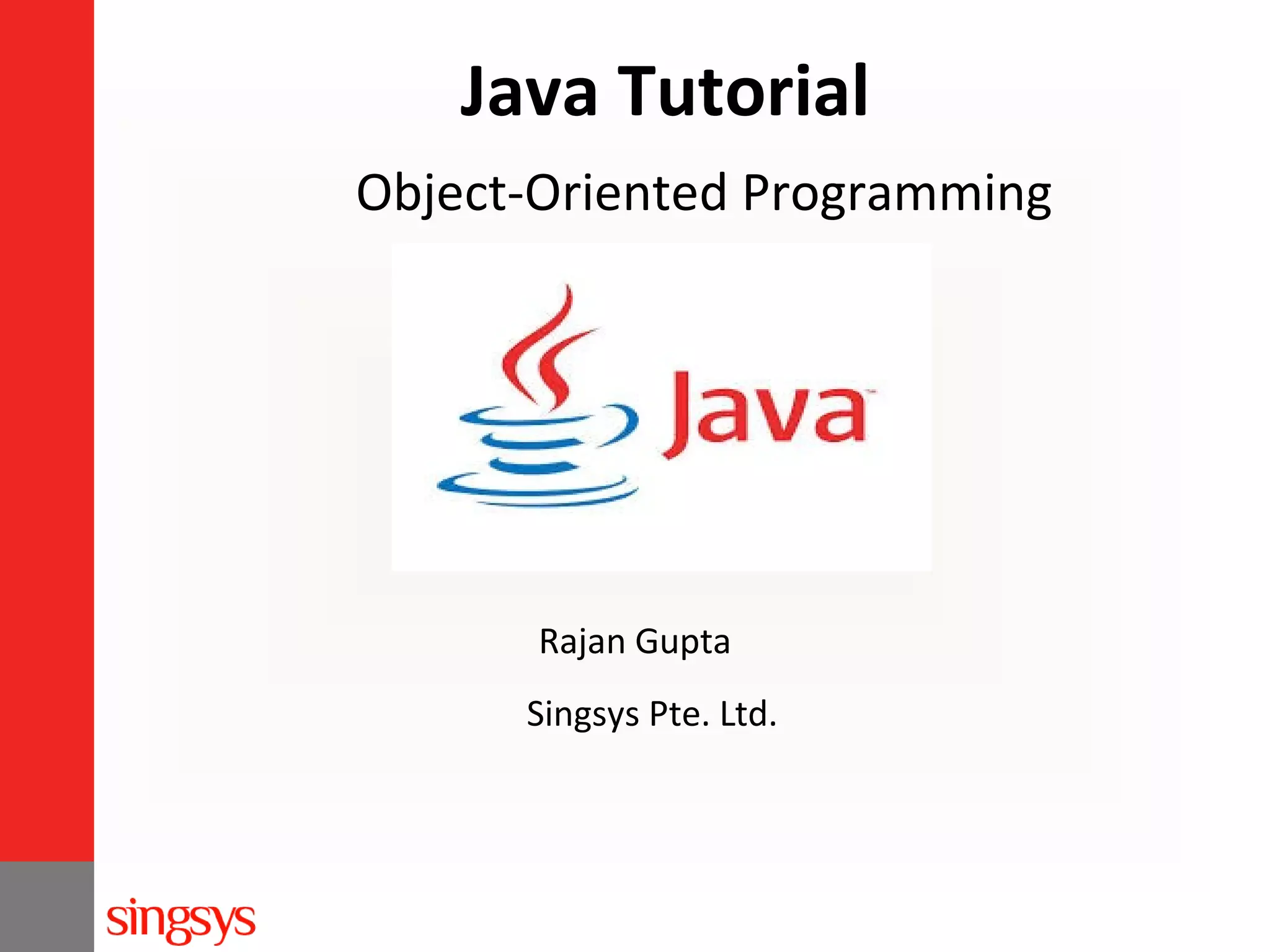
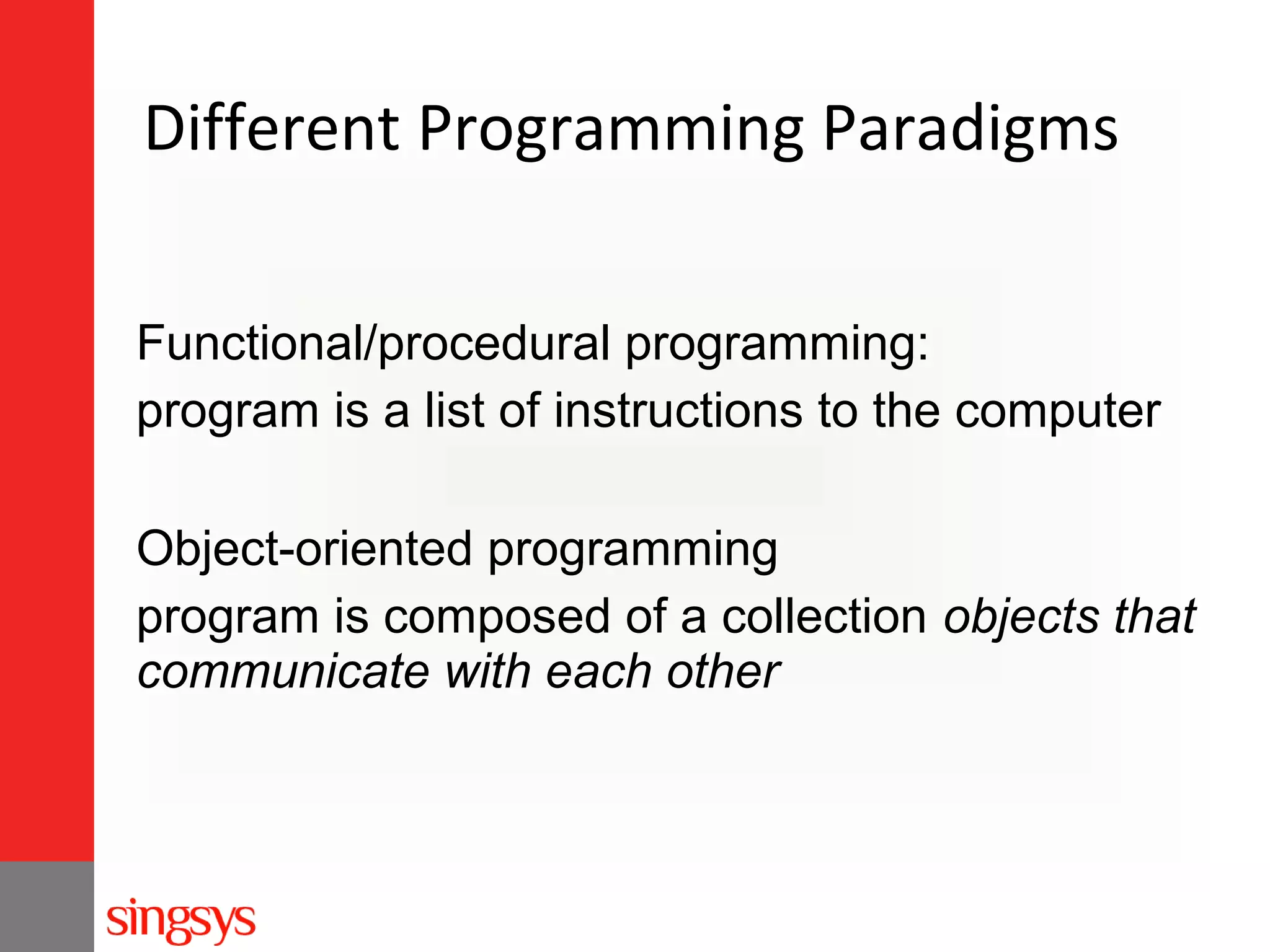
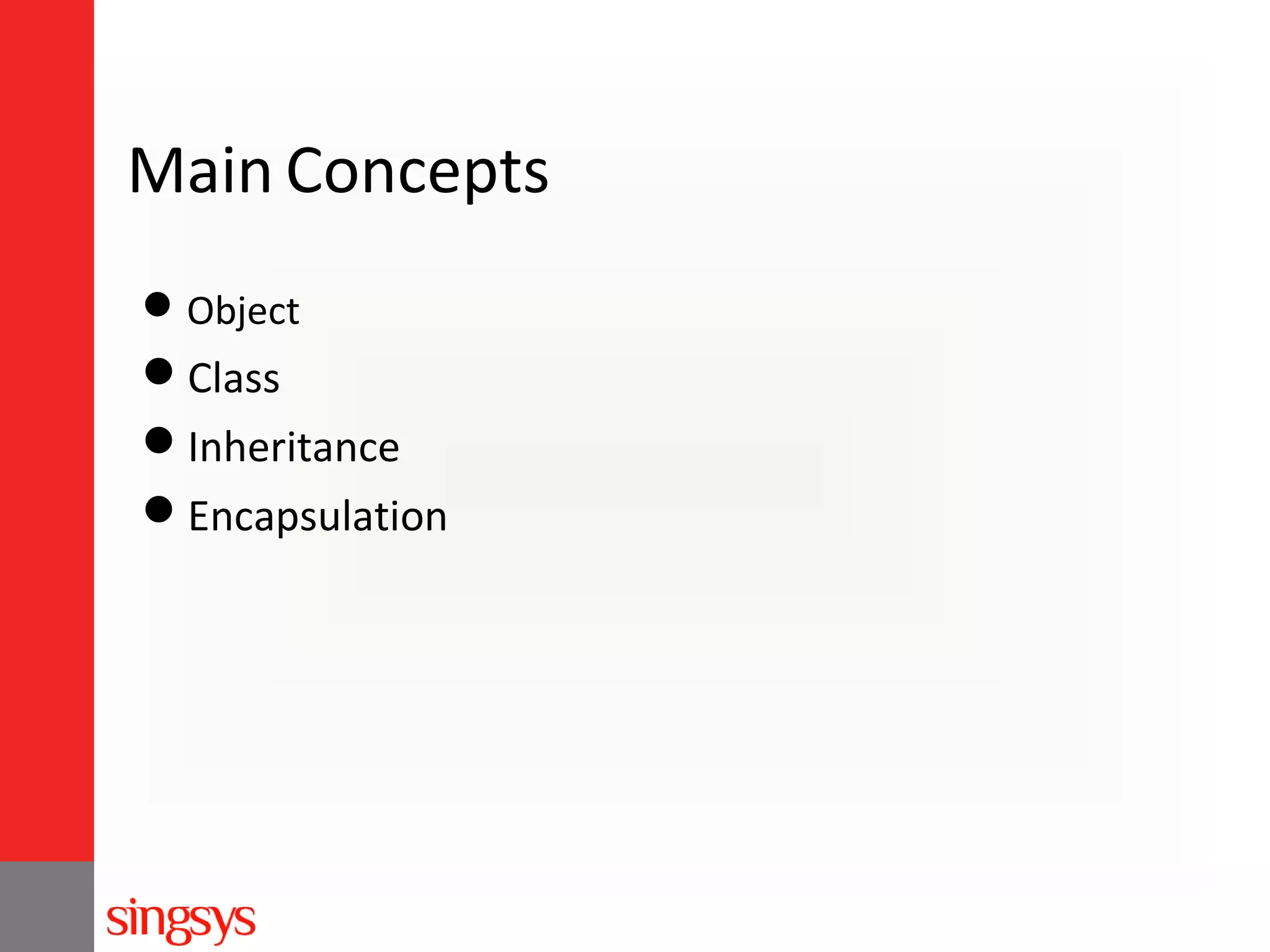
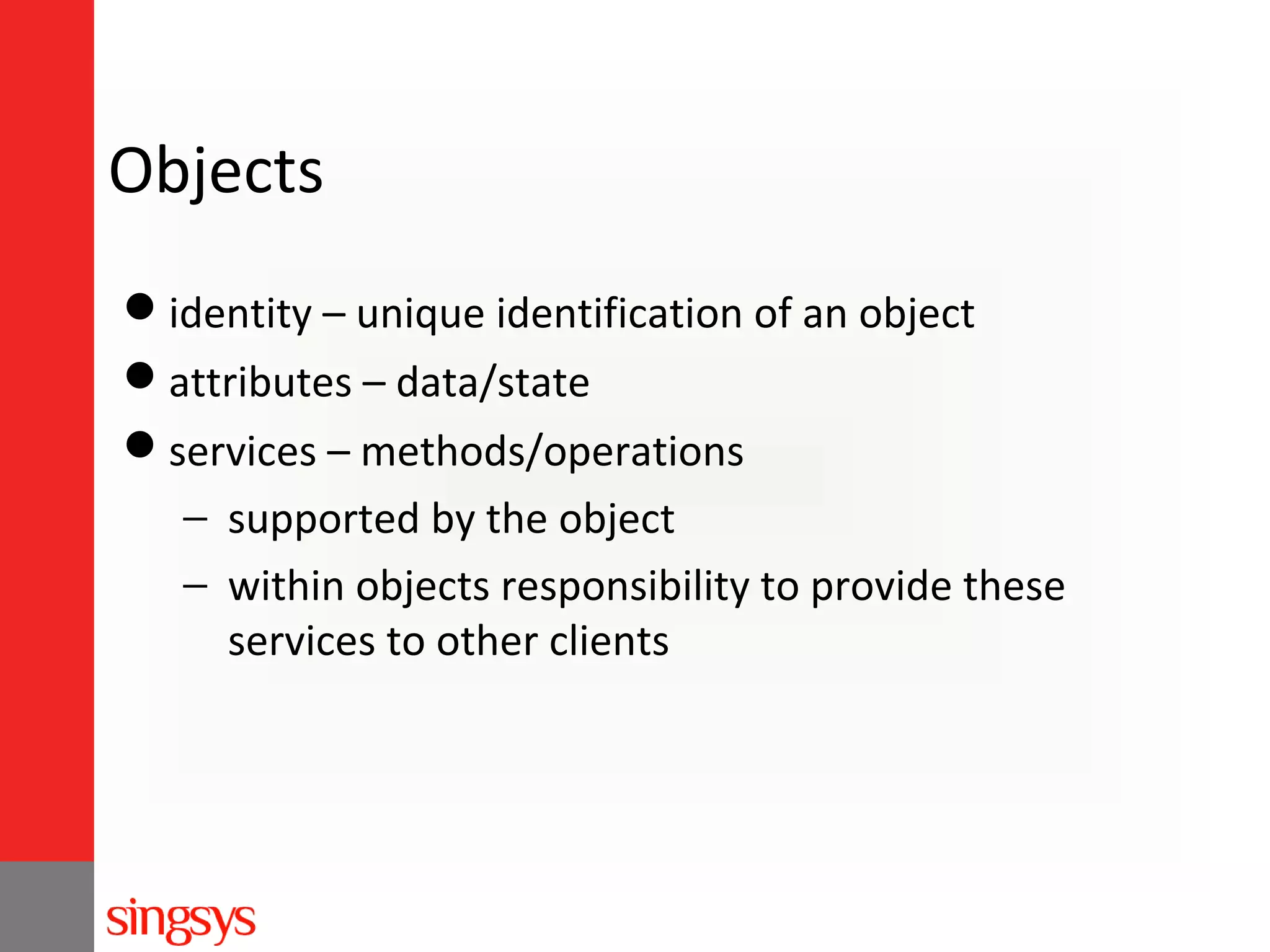
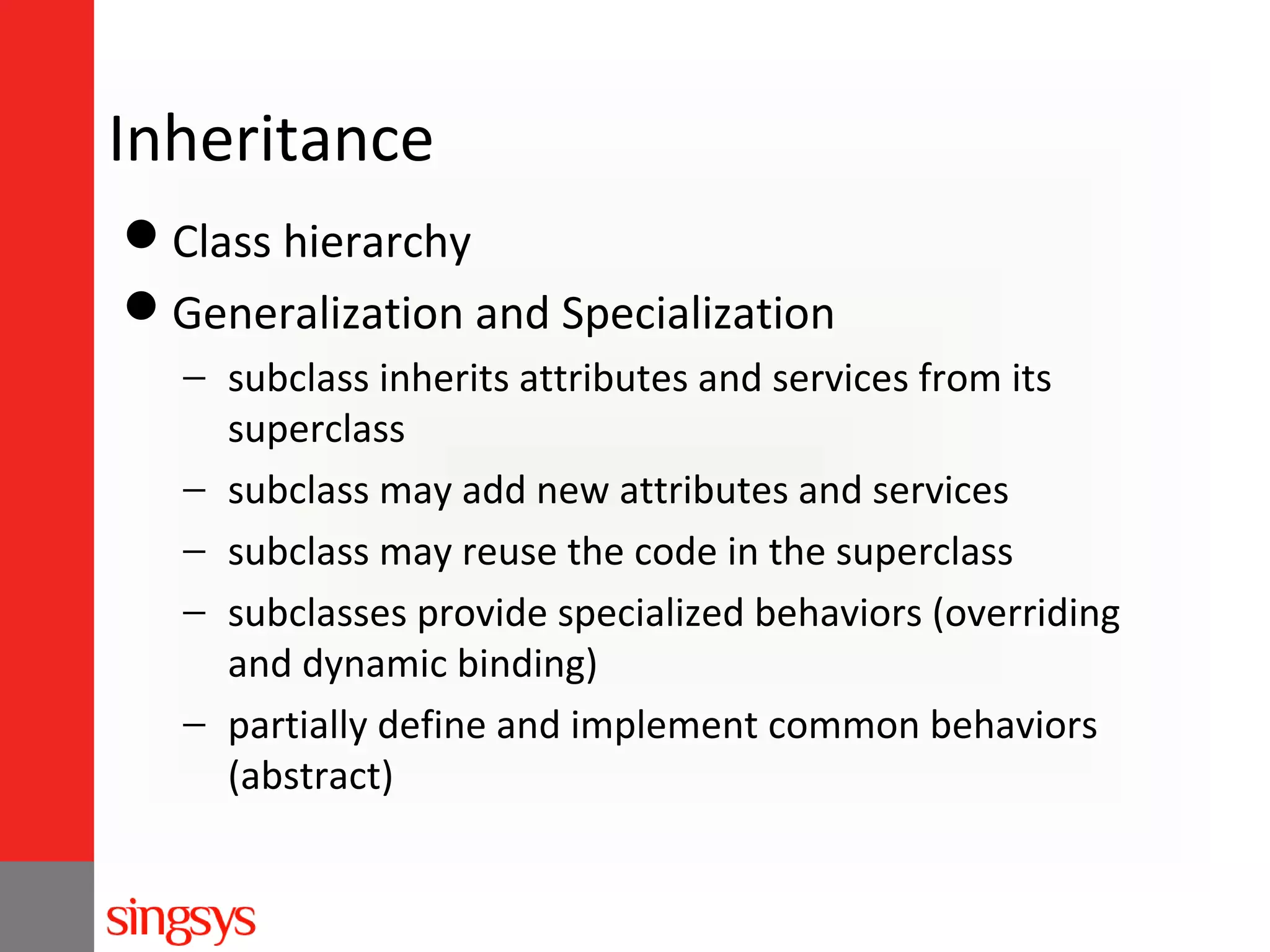
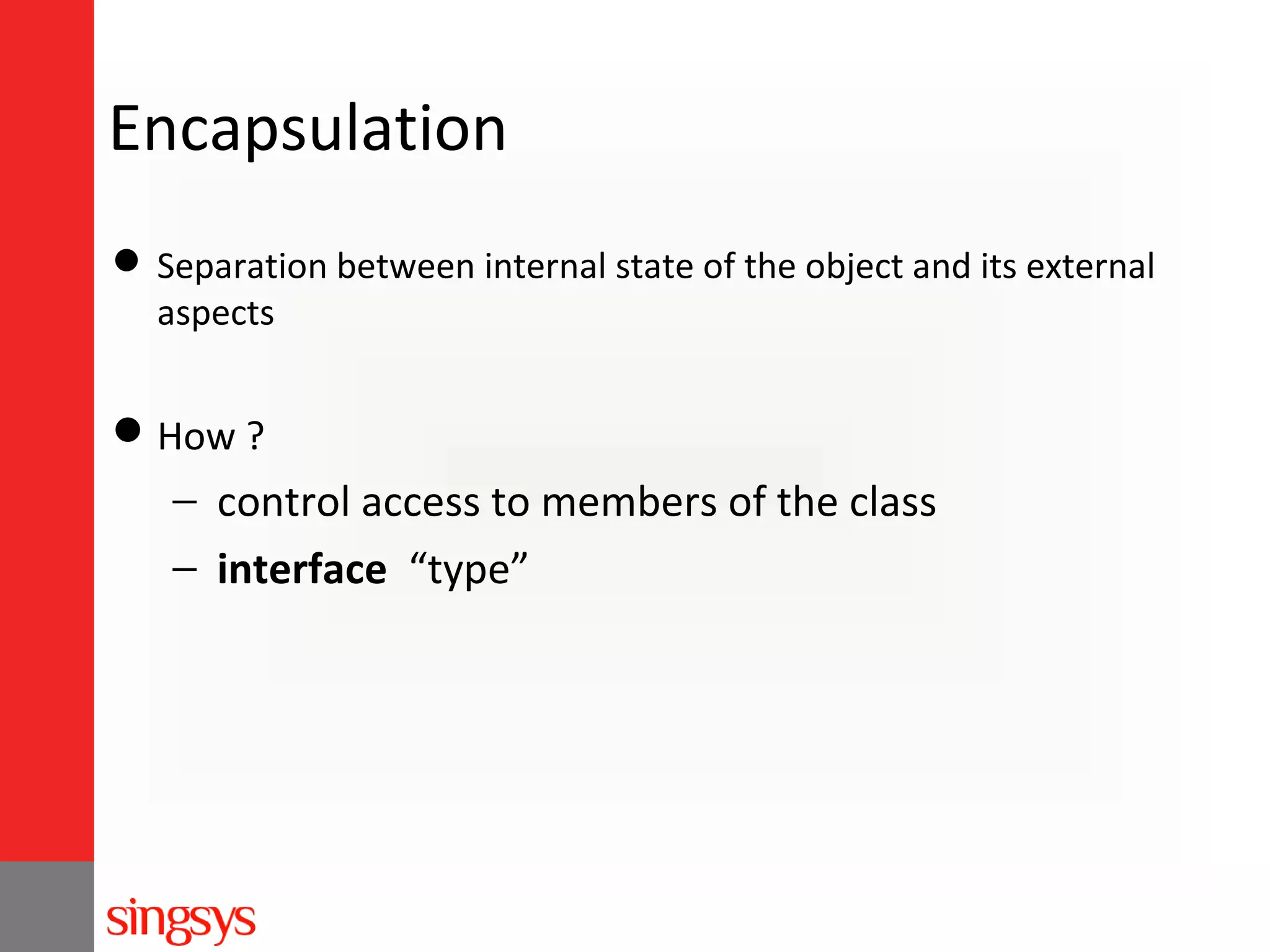
![Why Java ?
Portable
Easy to learn
[ Designed to be used on the Internet ]](https://image.slidesharecdn.com/javatutorial-131018071147-phpapp01/75/Java-Tutorial-7-2048.jpg)
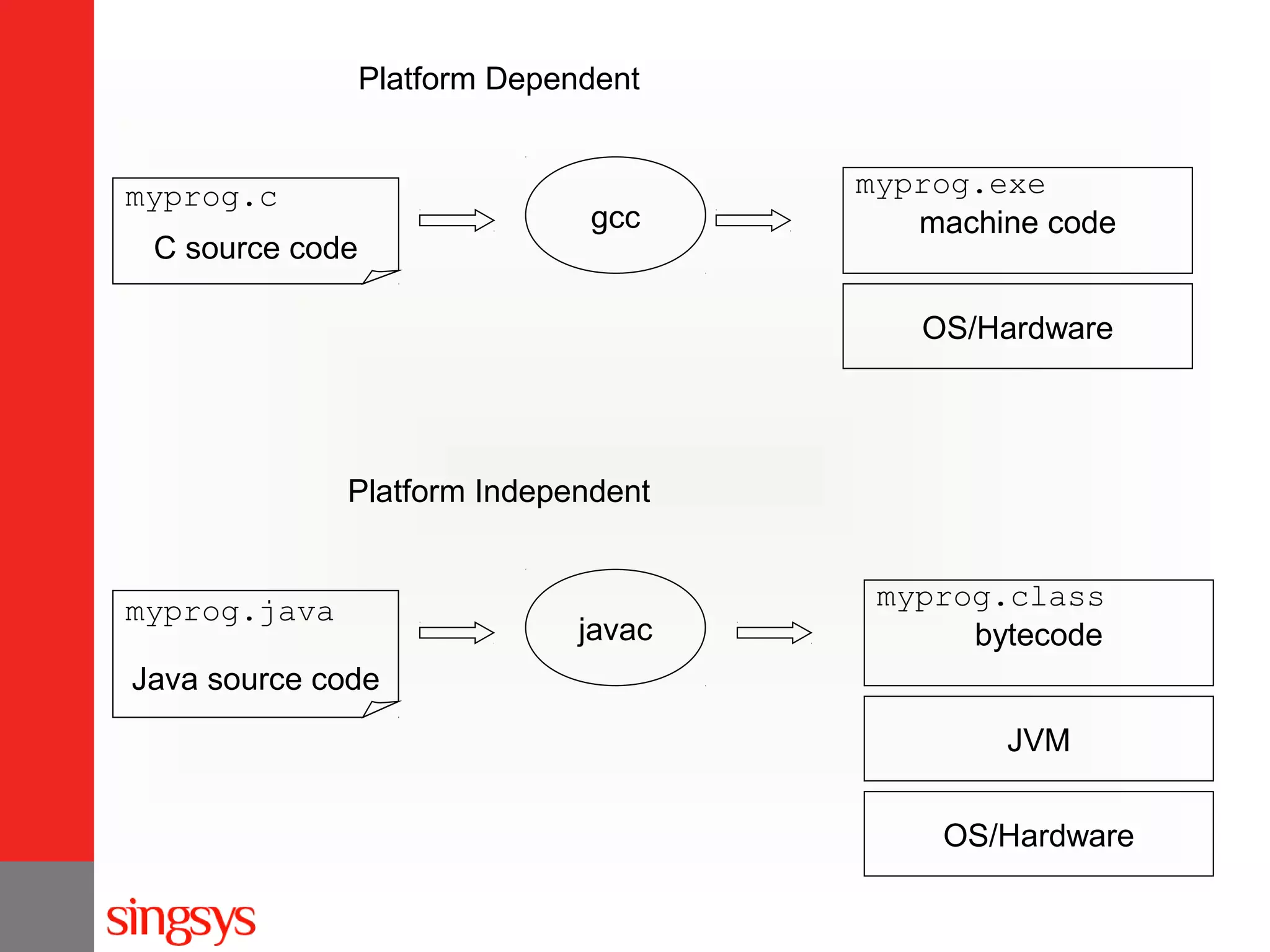
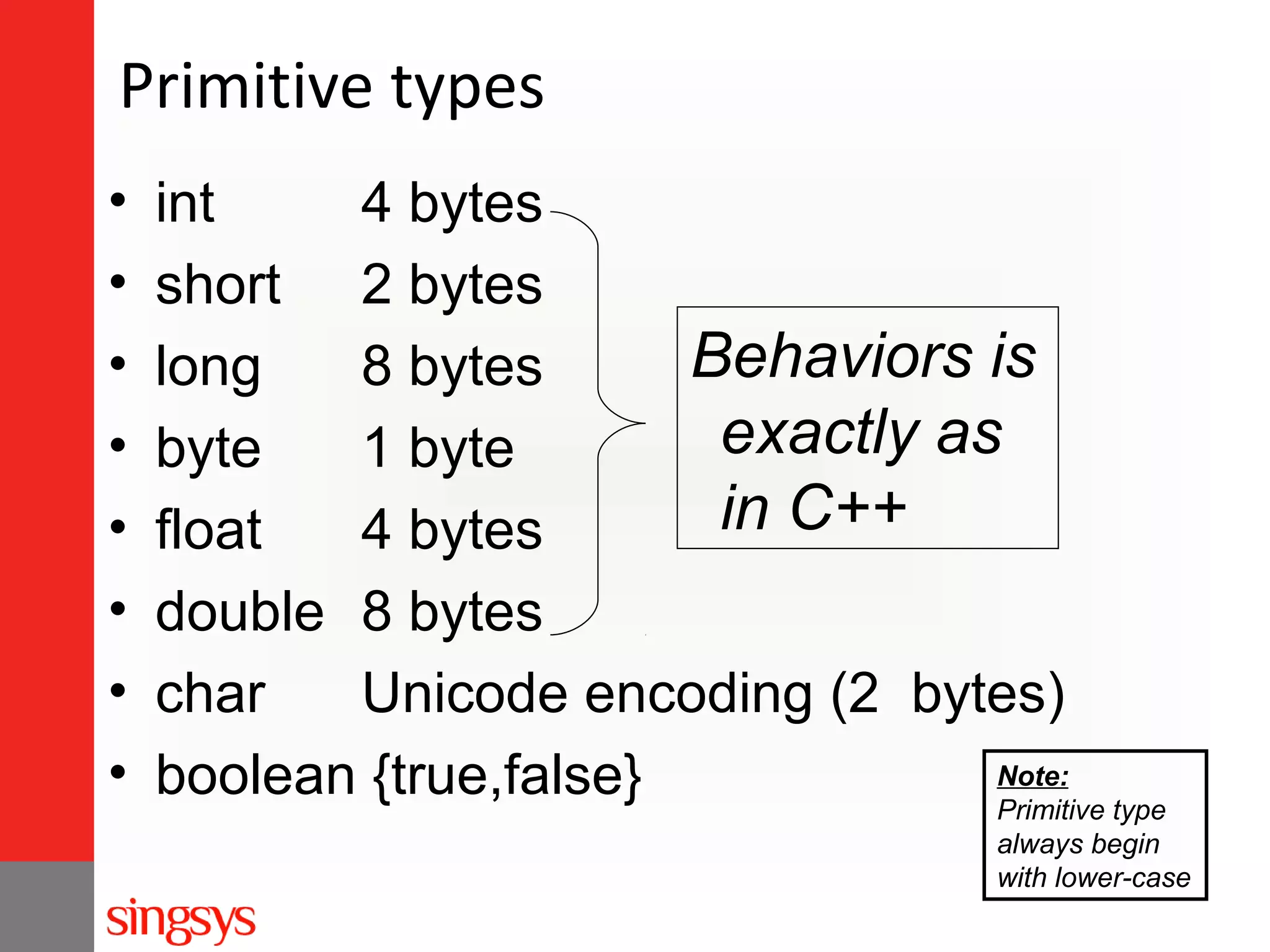
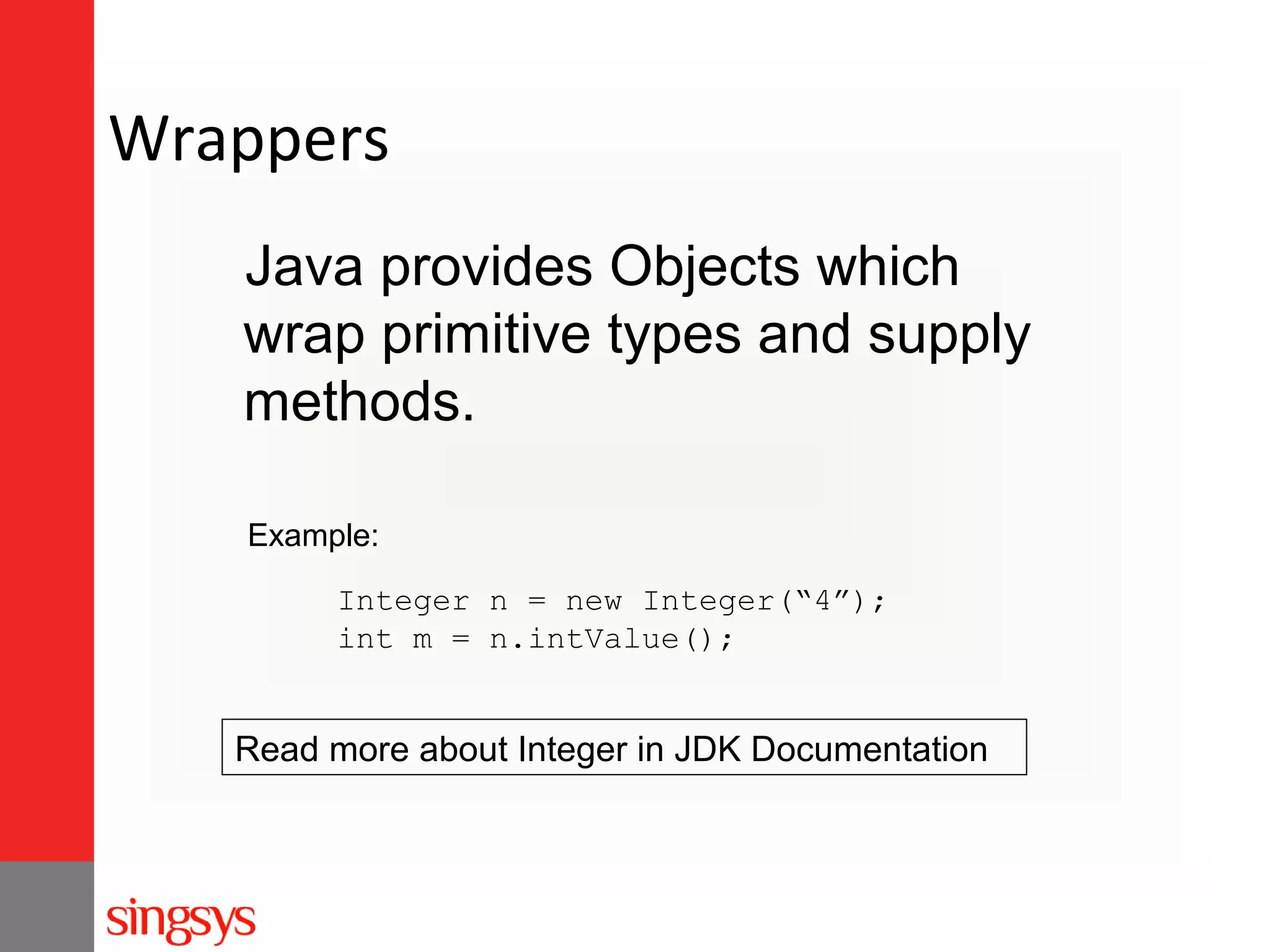
![Hello World
Hello.java
class Hello {
public static void main(String[] args) {
System.out.println(“Hello World !!!”);
}
}
C:javac Hello.java
C:java Hello
( compilation creates Hello.class )
(Execution on the local JVM)](https://image.slidesharecdn.com/javatutorial-131018071147-phpapp01/75/Java-Tutorial-11-2048.jpg)
![Arrays
• Array is an object
• Array size is fixed
Animal[] arr; // nothing yet …
arr = new Animal[4]; // only array of pointers
for(int i=0 ; i < arr.length ; i++) {
arr[i] = new Animal();
// now we have a complete array](https://image.slidesharecdn.com/javatutorial-131018071147-phpapp01/75/Java-Tutorial-12-2048.jpg)
![Arrays - Multidimensional
In C++ a
Animal arr[2][2]
Is:
• In Java
Animal[][] arr=
new Animal[2][2]
What is the type of
the object here ?](https://image.slidesharecdn.com/javatutorial-131018071147-phpapp01/75/Java-Tutorial-13-2048.jpg)
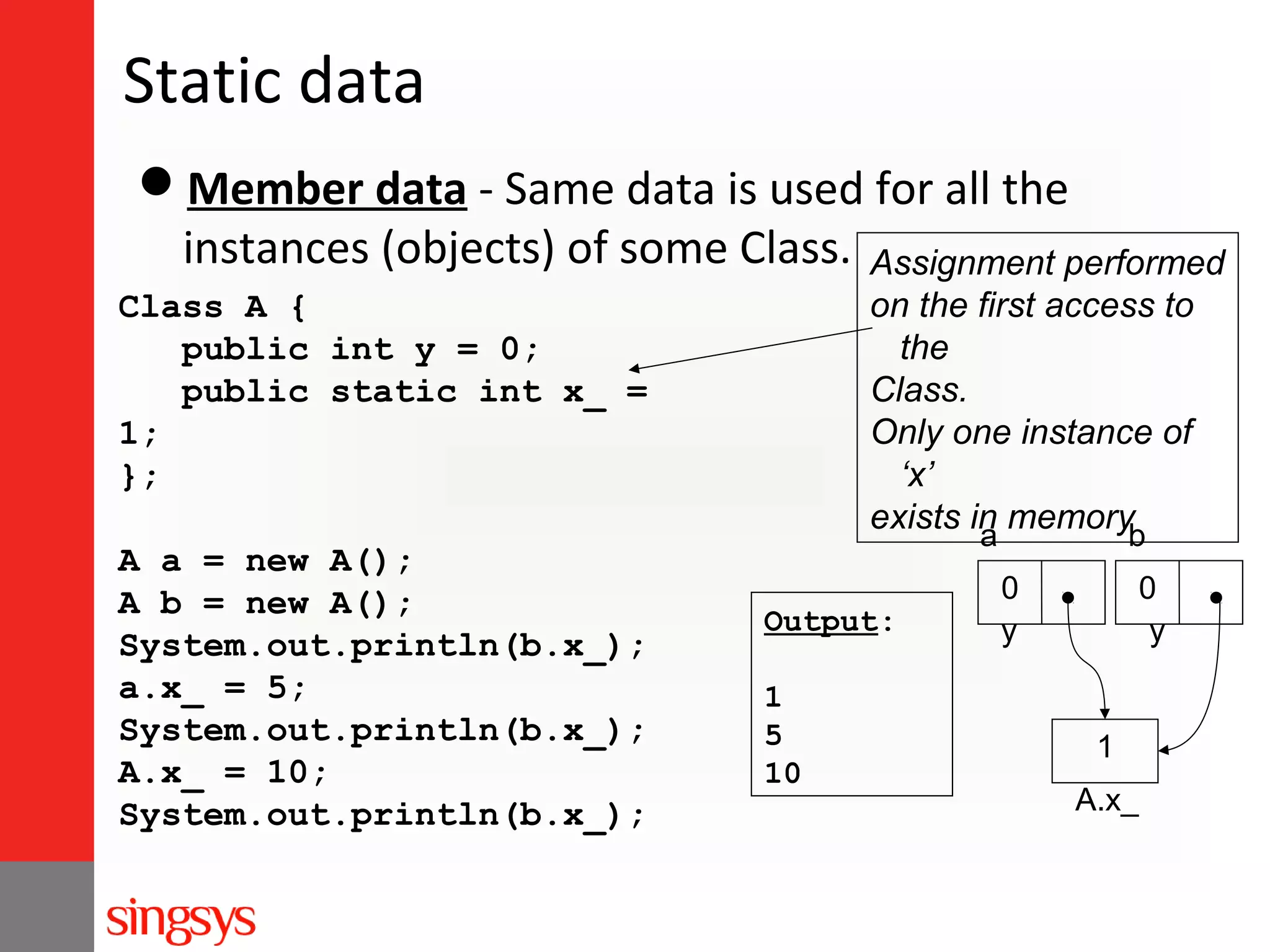
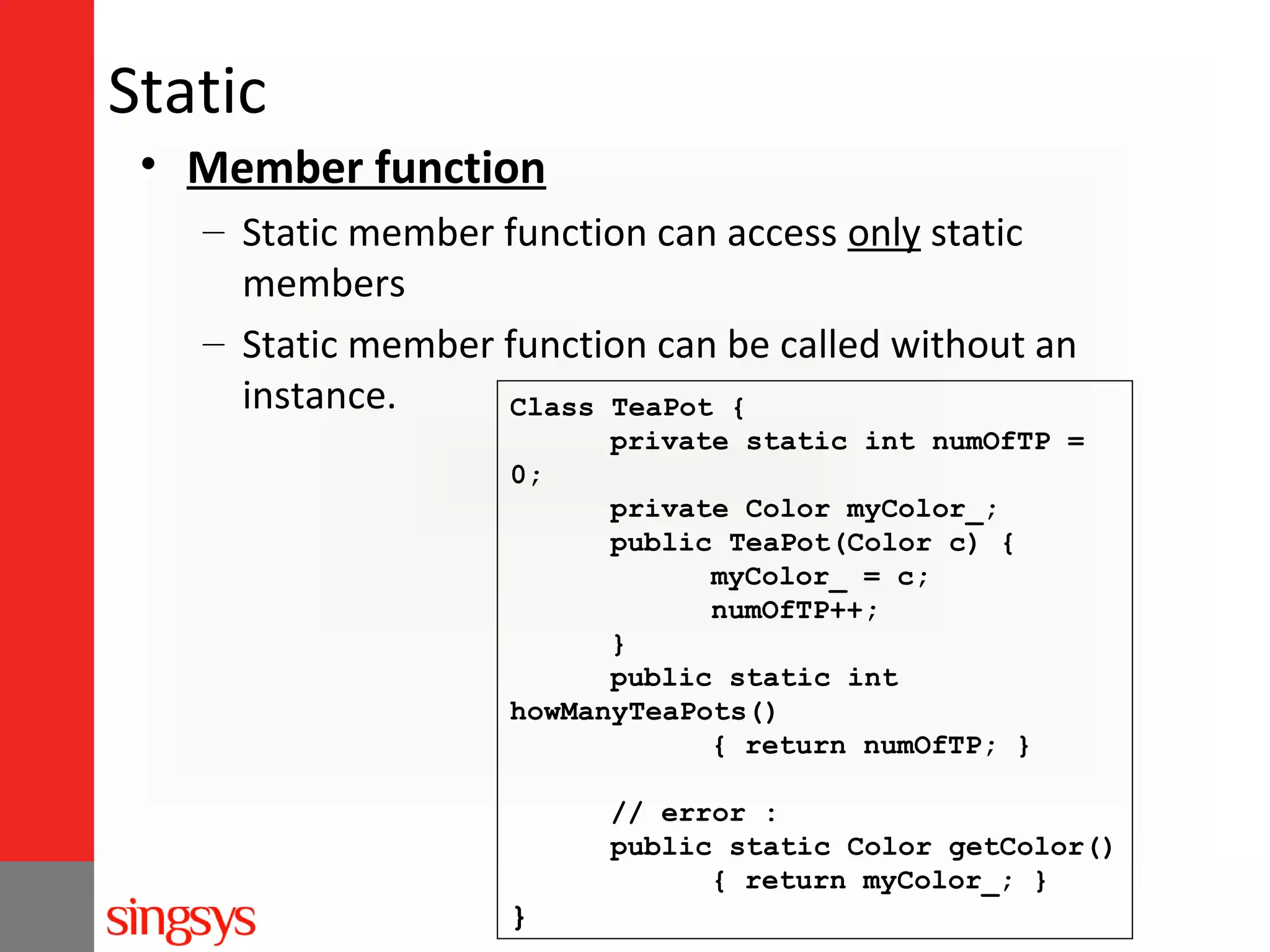
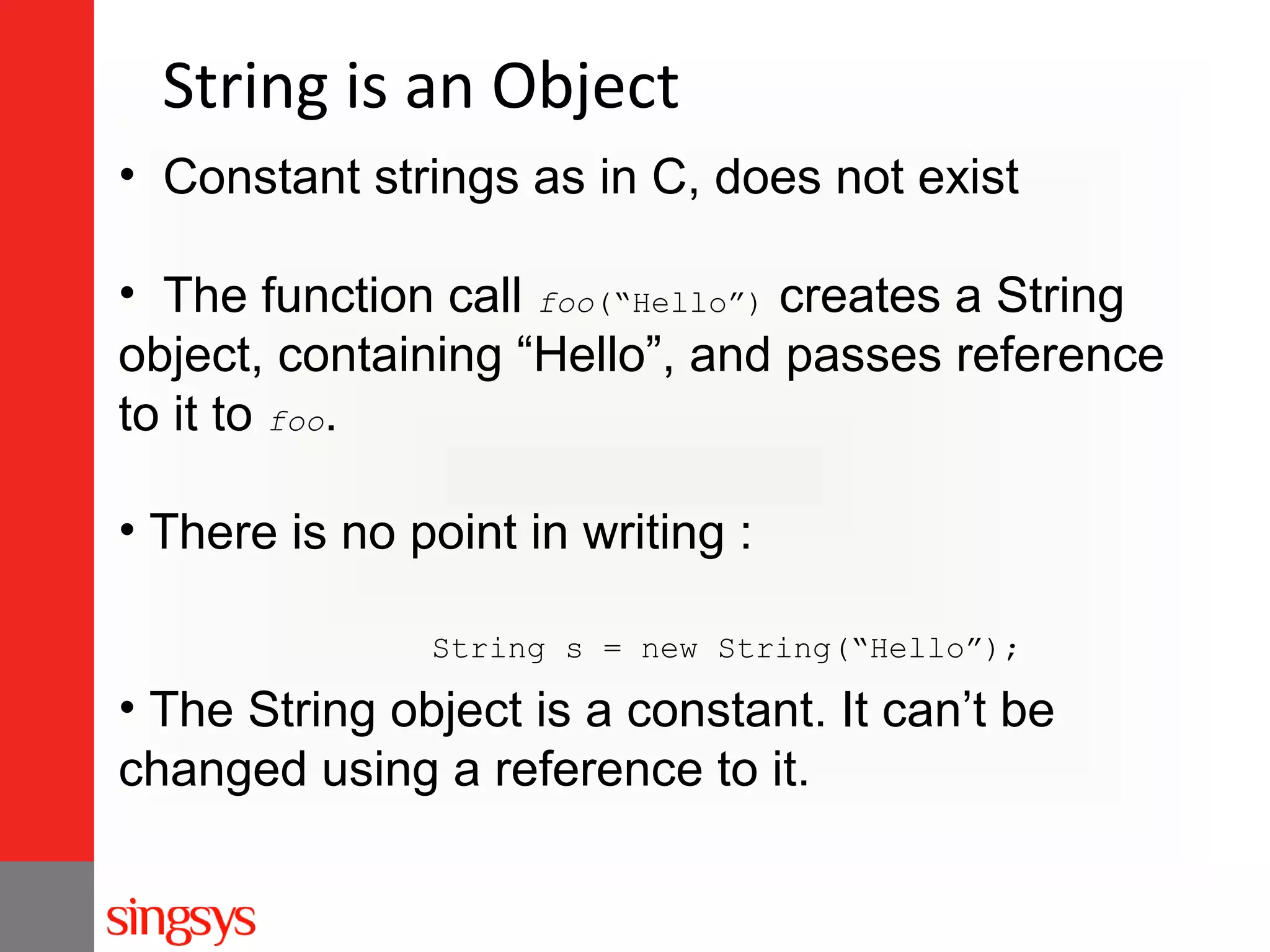
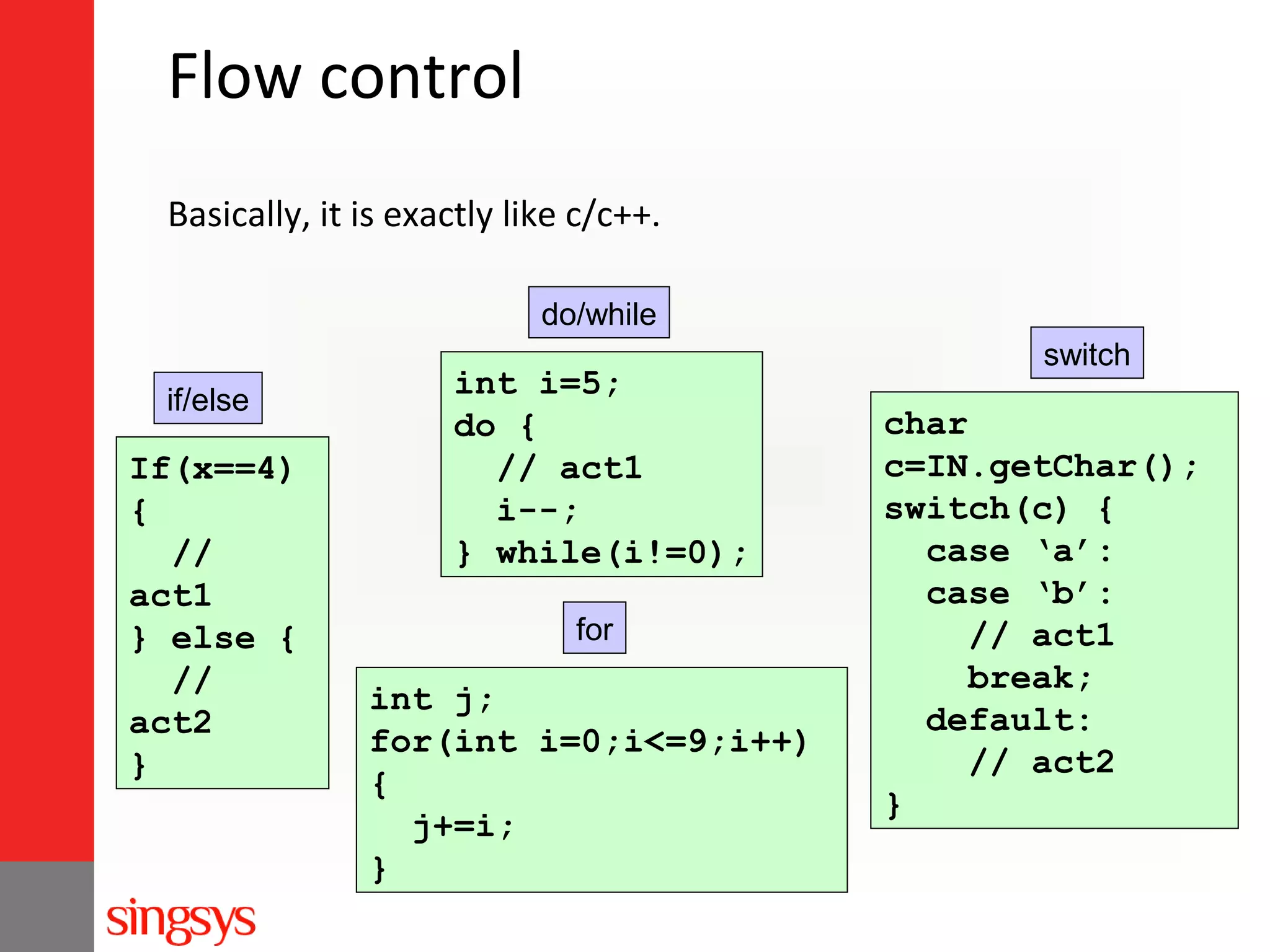
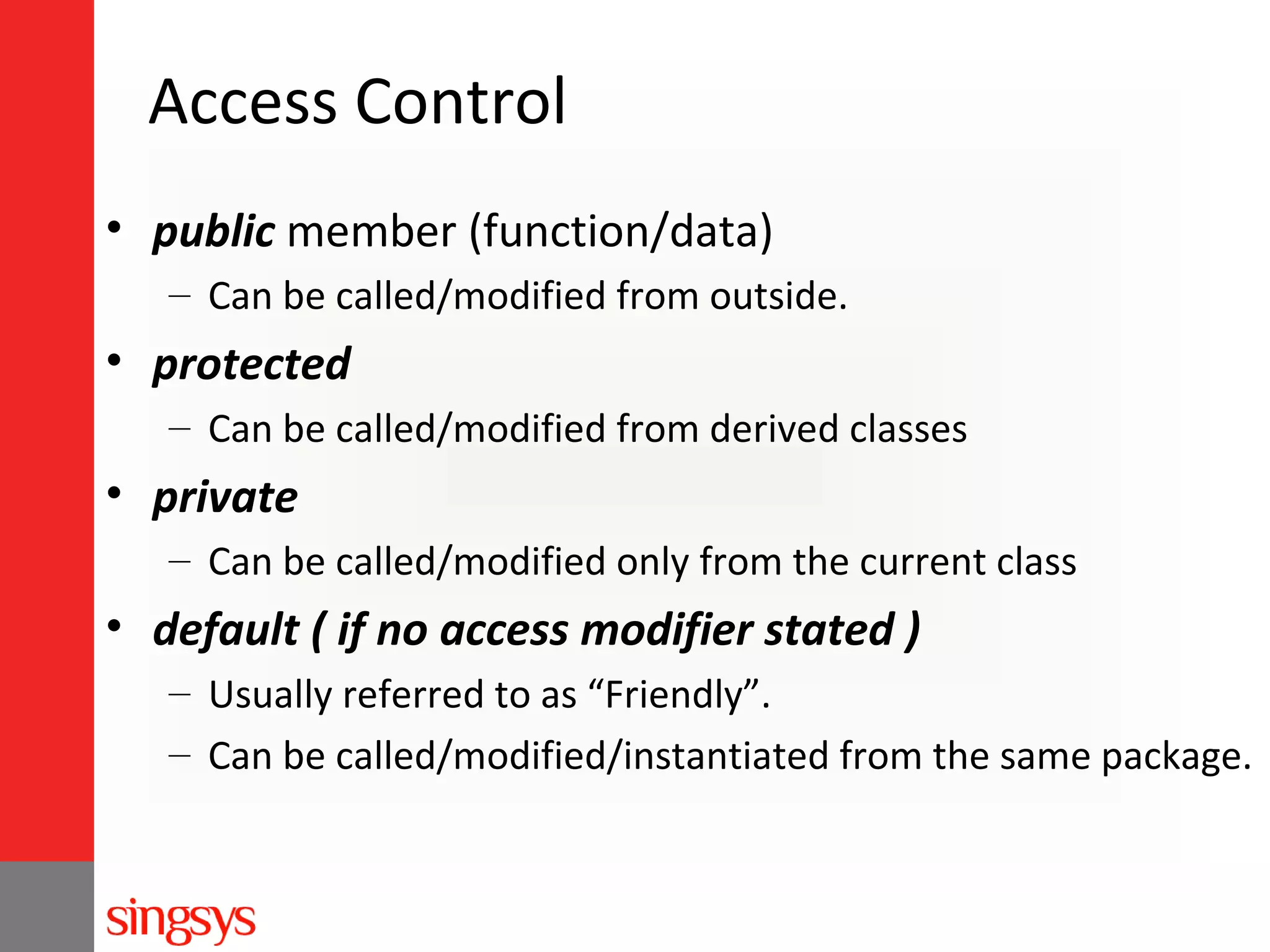
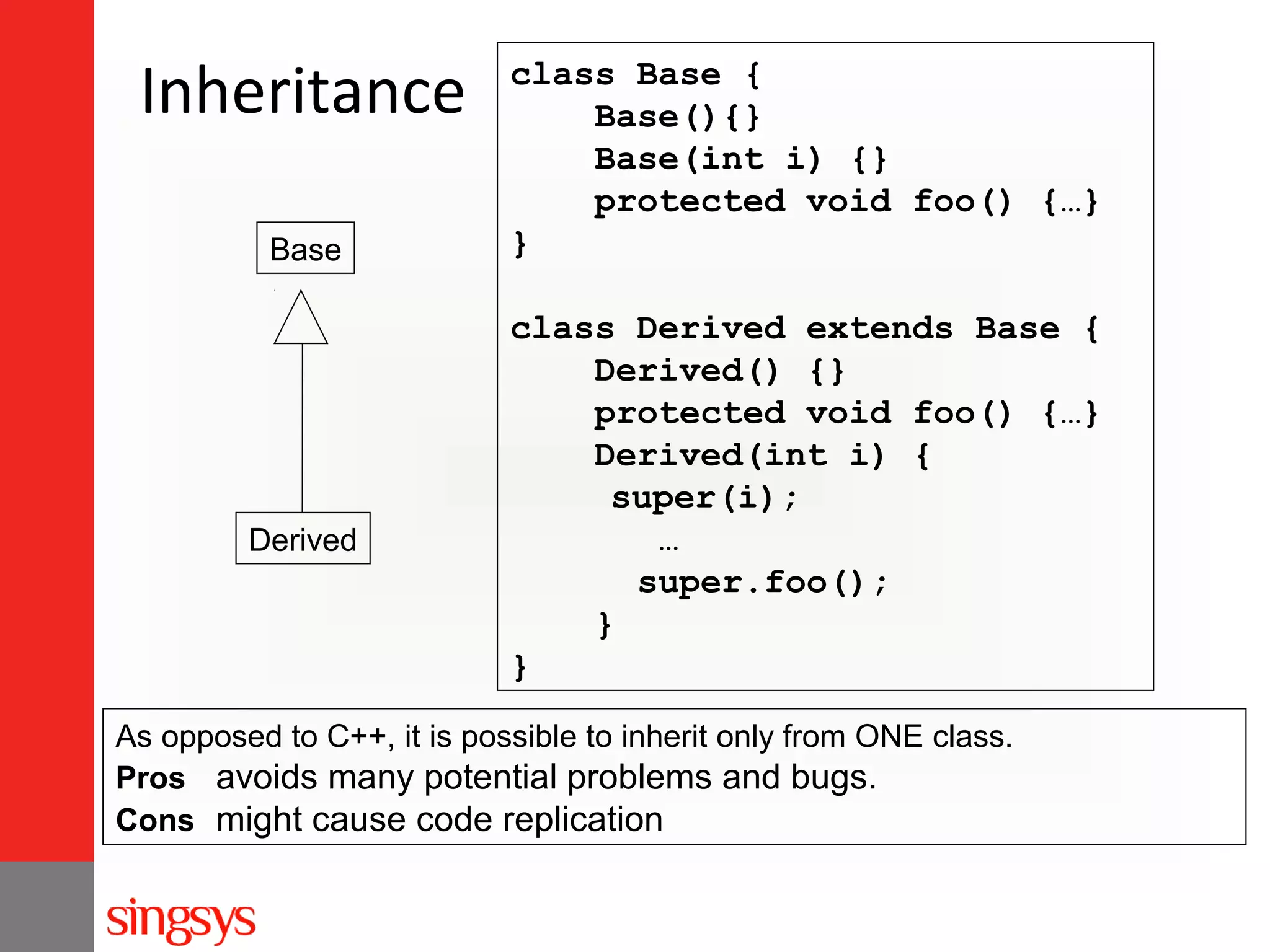
![Inheritance (2)
• In Java, all methods are virtual :
class Base {
void foo() {
System.out.println(“Base”);
}
}
class Derived extends Base {
void foo() {
System.out.println(“Derived”);
}
}
public class Test {
public static void main(String[] args) {
Base b = new Derived();
b.foo(); // Derived.foo() will be activated
}
}](https://image.slidesharecdn.com/javatutorial-131018071147-phpapp01/75/Java-Tutorial-20-2048.jpg)
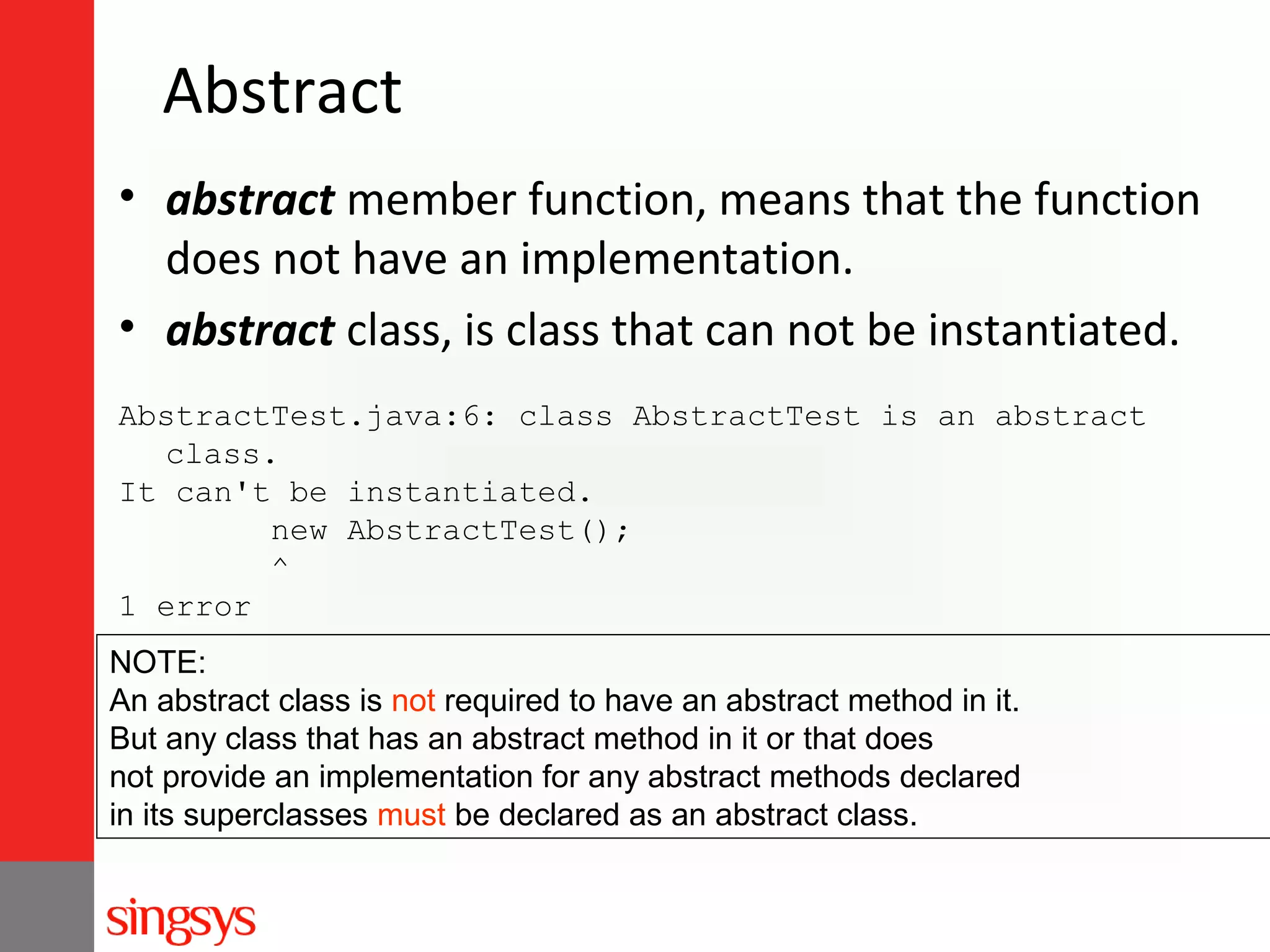
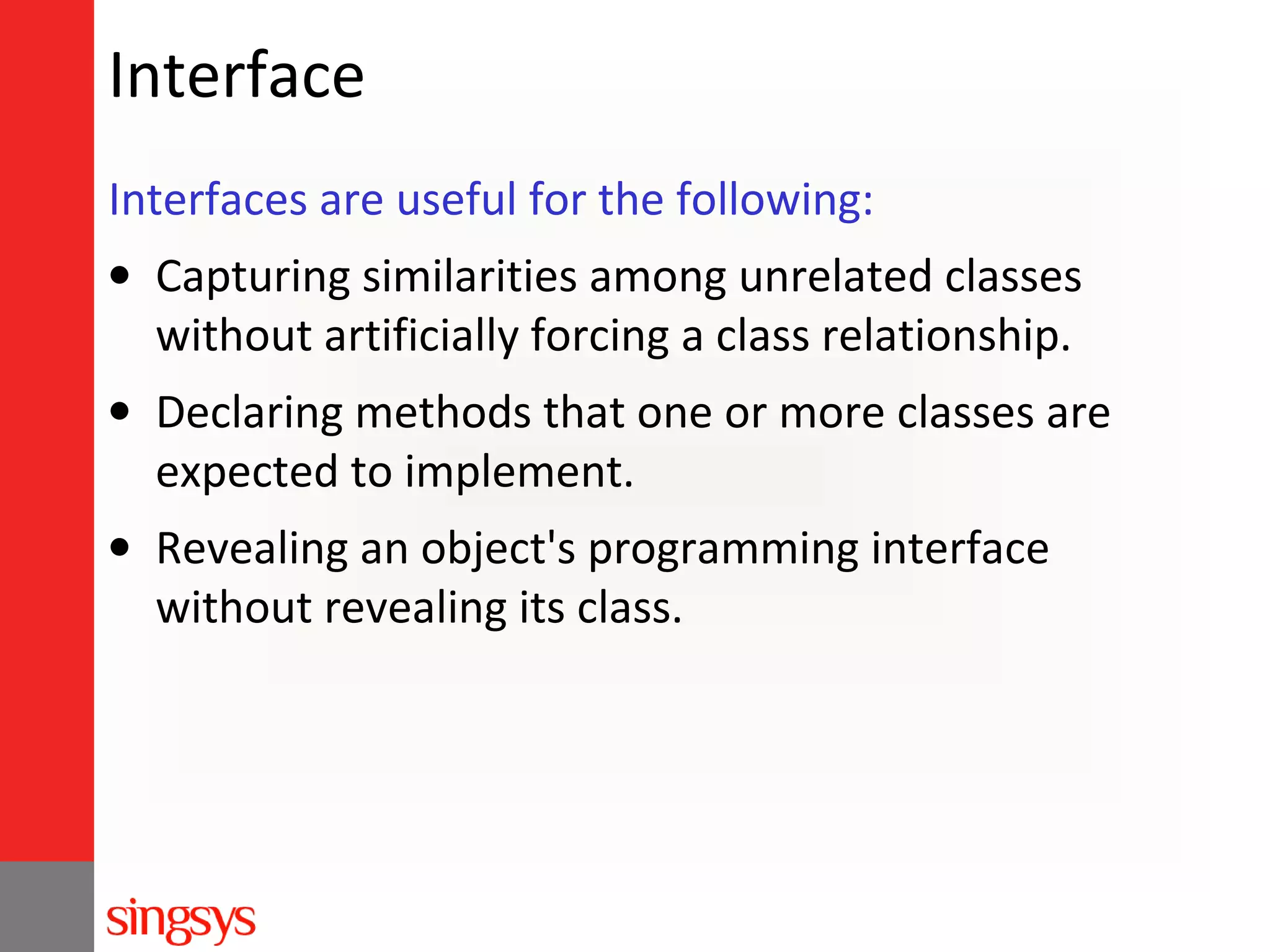
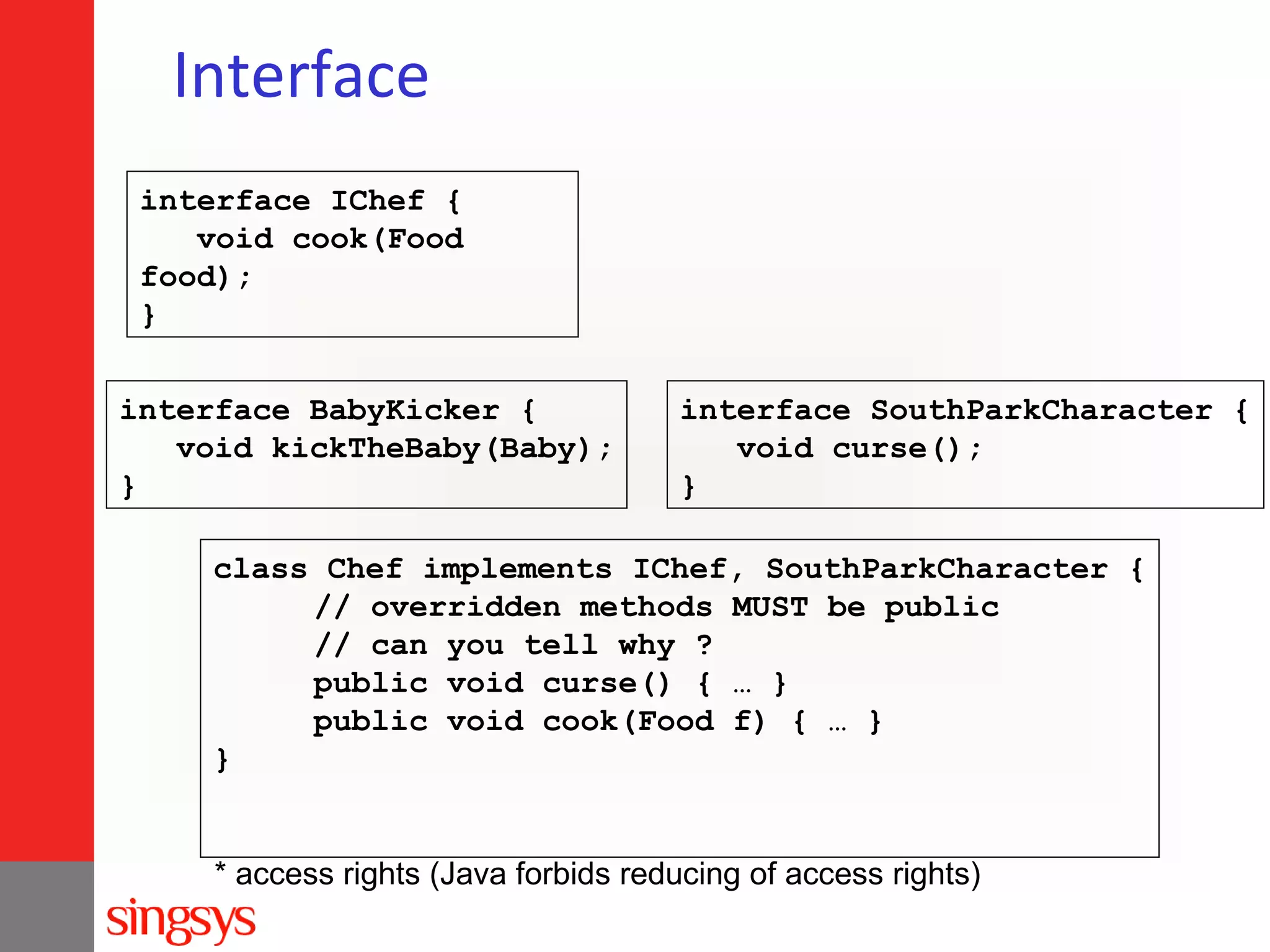
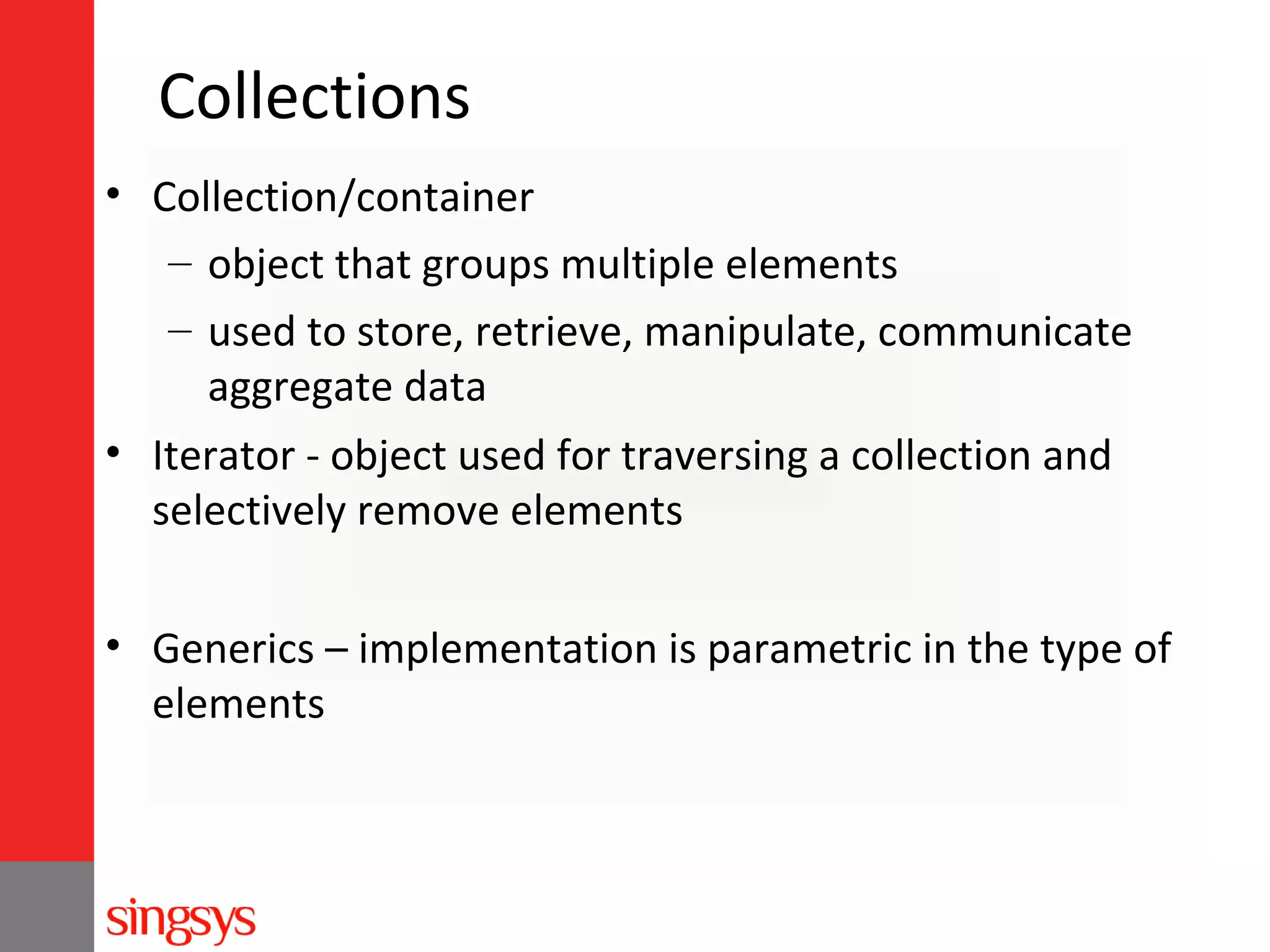
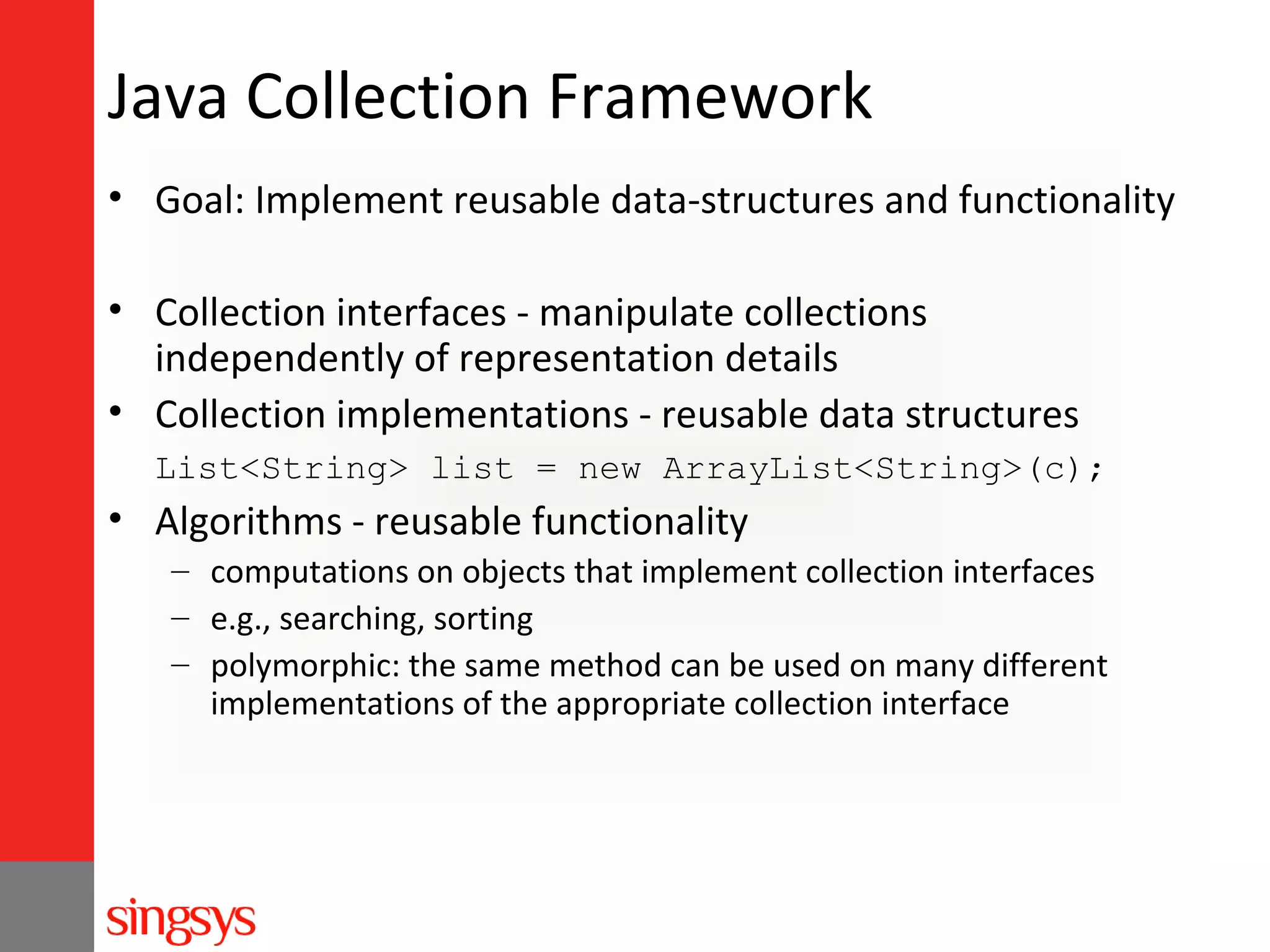
![Collection Interface
• Basic Operations
–
–
–
–
–
–
int size();
boolean isEmpty();
boolean contains(Object element);
boolean add(E element);
boolean remove(Object element);
Iterator iterator();
• Bulk Operations
–
–
–
–
–
boolean containsAll(Collection<?> c);
boolean addAll(Collection<? extends E> c);
boolean removeAll(Collection<?> c);
boolean retainAll(Collection<?> c);
void clear();
• Array Operations
– Object[] toArray(); <T> T[] toArray(T[] a); }](https://image.slidesharecdn.com/javatutorial-131018071147-phpapp01/75/Java-Tutorial-26-2048.jpg)
